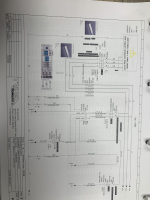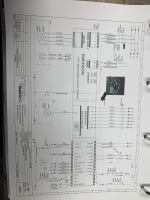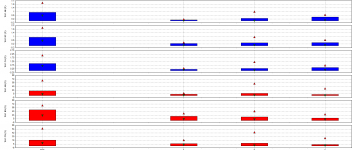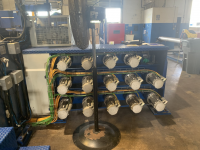So we have a piece of equipment that requires 310 amps at 400 V. It is the only piece of equipment on the circuit.
The primary side is supplied by the utility with 240 nominal high leg delta. The transformer is a 225 KVA delta / Wye transformer.
The secondary side is 400 volts WYE. No neutral has been brought to the equipment only three hots and a ground.
The equipment has 30 VFD's with low duty cycles, each rated at 30 Amps. Peak current (200ms) has been 120Amps on each leg.
I have monitored the power for the last month. During this time in operation we consistently get the ground showing intermittent 5.5V. Also current, but I cannot recollect amount (an amp or two?) Internal to equipment there is a transformer 400/24 transformer. The VFDs are fed by a power supply, measuring from the VFD to the ground bar, I show 45 ohms while running. The metal case (also supposedly grounded to the bar) only shows 2.6 Ohms.
Total harmonic distortion (current) ranges from 45-70% - which I think contribute to the voltage on the ground.
When turning on, random VFD's will trip going into error conditions. This goes on for about 45-135 minutes. After which the equipment runs all day without incident.
Random problems always brings to mind grounding issues.
I suspect that the voltage on the ground is causing the trips.
Question: What avenue would you attack this?
1). Bring a neutral, with the idea that this would allow us to cleanup the ground? (Does that even make sense?)
2). Install line reactors, with the idea that lowering the harmonic distortion by 10% would result in less voltage on the ground.
3). Same argument as #2, except active filtering would lower the distortion down to 5-8%. (much more expensive).
4). Something else?
Appreciate the thoughts
The primary side is supplied by the utility with 240 nominal high leg delta. The transformer is a 225 KVA delta / Wye transformer.
The secondary side is 400 volts WYE. No neutral has been brought to the equipment only three hots and a ground.
The equipment has 30 VFD's with low duty cycles, each rated at 30 Amps. Peak current (200ms) has been 120Amps on each leg.
I have monitored the power for the last month. During this time in operation we consistently get the ground showing intermittent 5.5V. Also current, but I cannot recollect amount (an amp or two?) Internal to equipment there is a transformer 400/24 transformer. The VFDs are fed by a power supply, measuring from the VFD to the ground bar, I show 45 ohms while running. The metal case (also supposedly grounded to the bar) only shows 2.6 Ohms.
Total harmonic distortion (current) ranges from 45-70% - which I think contribute to the voltage on the ground.
When turning on, random VFD's will trip going into error conditions. This goes on for about 45-135 minutes. After which the equipment runs all day without incident.
Random problems always brings to mind grounding issues.
I suspect that the voltage on the ground is causing the trips.
Question: What avenue would you attack this?
1). Bring a neutral, with the idea that this would allow us to cleanup the ground? (Does that even make sense?)
2). Install line reactors, with the idea that lowering the harmonic distortion by 10% would result in less voltage on the ground.
3). Same argument as #2, except active filtering would lower the distortion down to 5-8%. (much more expensive).
4). Something else?
Appreciate the thoughts
Last edited:










